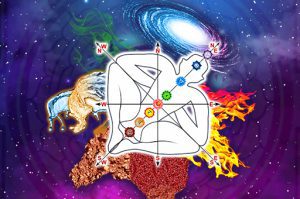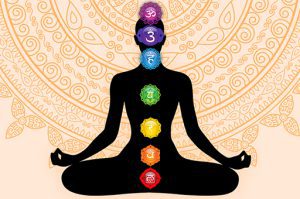
The entire Cosmos functions perfectly under the Divine Trinity of Lord Brahma, Lord Vishnu and Lord Shiva, who govern the modes of creation, preservation and dissolution respectively.
Similarly, the world is permeated by the three Gunas, Sattva, Rajas and Tamas. Every being and object consists of a combination of these three modes. Sattva is pure goodness, Rajas represents passion and Tamas represents darkness and ignorance.
When the Sattva guna predominates in a person, he is balanced and calm. If Rajas is strong in an individual, he is involved in passionate, frenetic activity, whereas if the quality of Tamas overshadows a person, it makes him lethargic and depressed, even suicidal or thieving.
Food and the three Gunas
We imbibe the qualities of the food we eat. Sattvic food promotes a clear and peaceful mind. Vegetarian food that’s fresh, juicy and nourishing, easy to digest and made with love is Sattvic. This includes legumes, vegetables, fruit, ghee and fresh milk.
Rajasic food makes the mind passionate and easily frustrated if the goal is not attained. It contains garlic, chillies, caffeine, eggs, high quality meat, alcohol and fermented or freshly canned foods. Foods made in anger, fried foods or over-cooked Sattvic foods also get Rajasic qualities.
Tamasic food needs a lot of energy to digest and can increase inertia and dull the mind. Onions, mushrooms, meats as well as leftovers, microwaved and frozen foods belong in this category. The long term effects of alcohol and food made with indifference are tamasic.
The Interplay of Three Gunas
We all are driven by our desires to enjoy the results of our karma. A person tends to be gentle in the mode of goodness (sattva), passionate in the mood of rajas and blind to everything in the mode of ignorance (tamas). When we are good to others around us, the mode of goodness (sattva) has overshadowed the other modes in us. When we become selfish and harsh to those dear to us, this is because Rajas and Tamas are at work and have defeated the sattva in us. Thus, at any point in life, one of the other modes is competing for supremacy in a person.
However, we cannot be overtly guided by any one of these gunas. Depending on the situation, a person needs to be Rajasic if he is to produce and create things in the world involving hard labour and activity. If he wants calmness and balance, he will have to promote sattva within himself and at times, he will need to be in rest (tamas).
What the Bhagvad Gita says:
The Twelfth Chapter of the Bhagvad Gita deals with the Discrimination of the Three Gunas. In this extract, Lord Krishna tells Arjuna that a person must rise above the three Gunas and releases all the three qualities if he is to achieve the Ultimate Goal in life.
When Arjuna wants to know how a person can do it, here is what Lord Krishna says:
He who hates not the appearance of light, (the effect of Sattva), activity (the effect of Rajas), and delusion (the effect of Tamas), (in his own mind), O Pandava, nor longs for them when absent;
He who, sitting like one unconcerned, is moved not by the Gunas, who, knowing that the Gunas operate, is Self-centred and swerves not;
Alike in pleasure and pain, Self-abiding, regarding a clod of earth, a stone and gold alike; the same to agreeable and disagreeable, firm, the same in censure and, praise.
The same in honour and disgrace, the same to friend and foe, relinquishing all undertakings—he is said to have gone beyond the Gunas; And he who serves Me with an unswerving devotion, he, going beyond the Gunas, is fitted for becoming Brahman. For I am the abode of Brahman, the Immortal and Immutable, of everlasting Dharma and of Absolute Bliss.
To book a consultation with Neeta Singhal, visit http://rudraksha-ratna.com/blog/write-to-neetaji/







